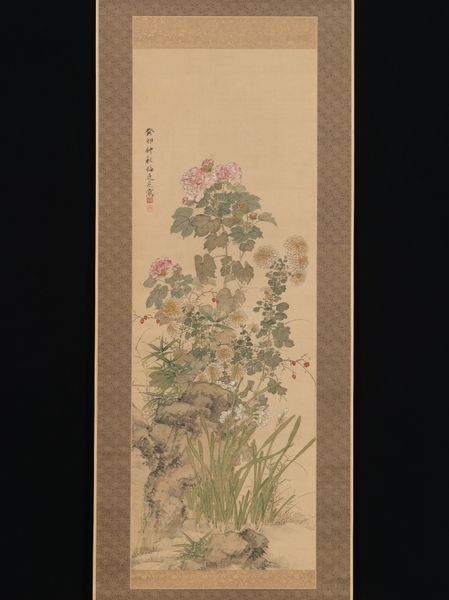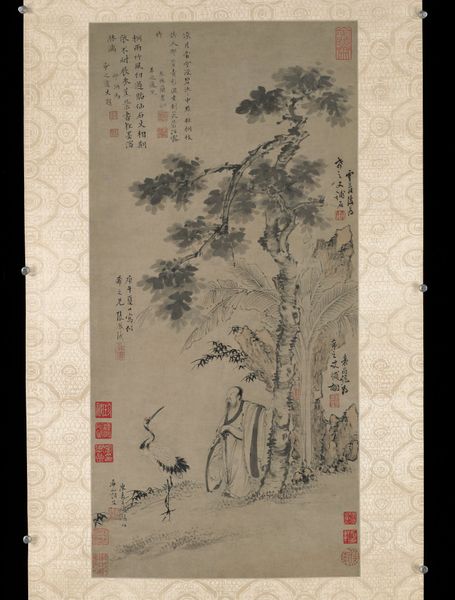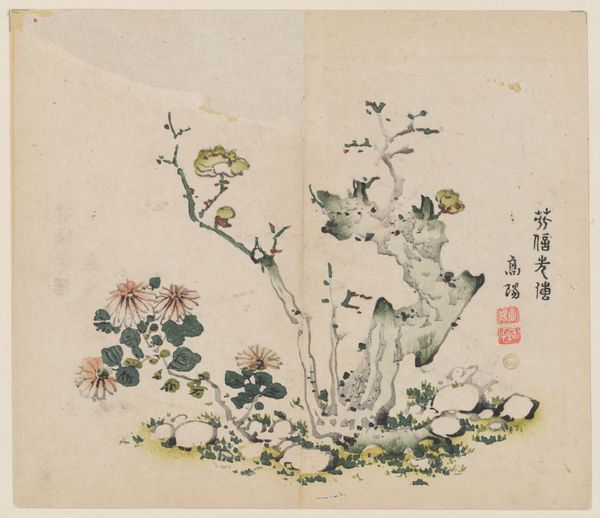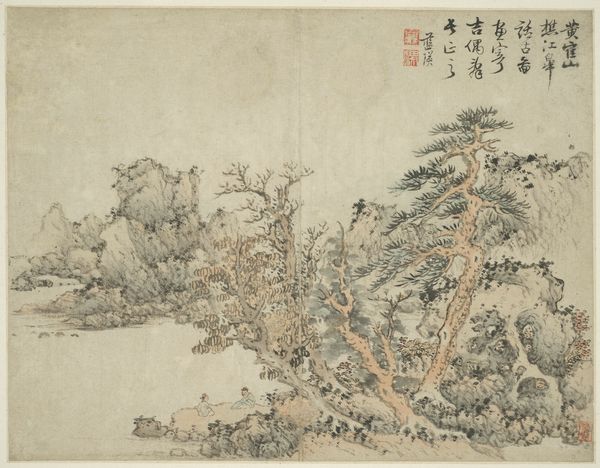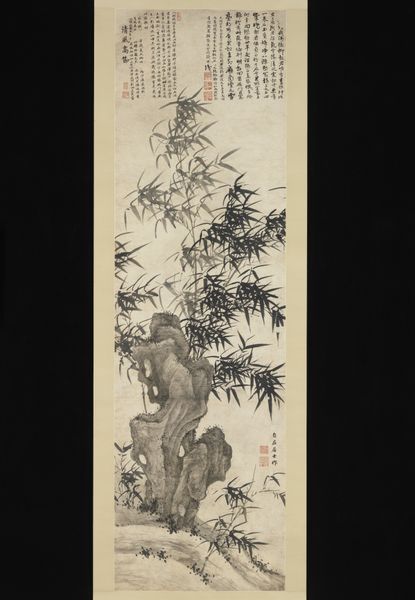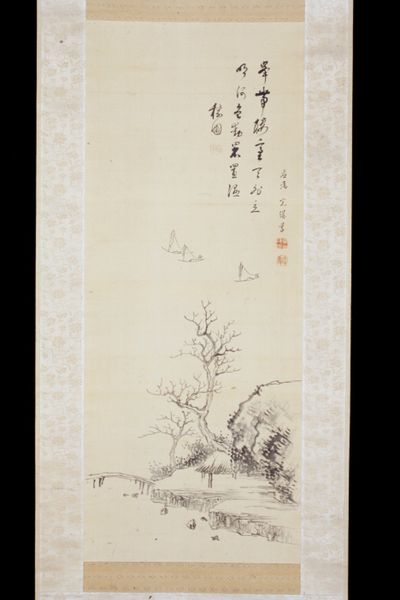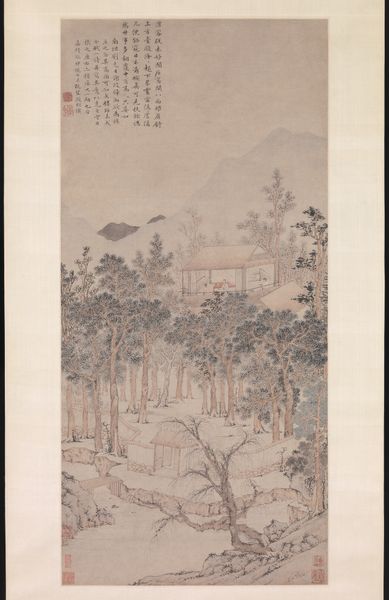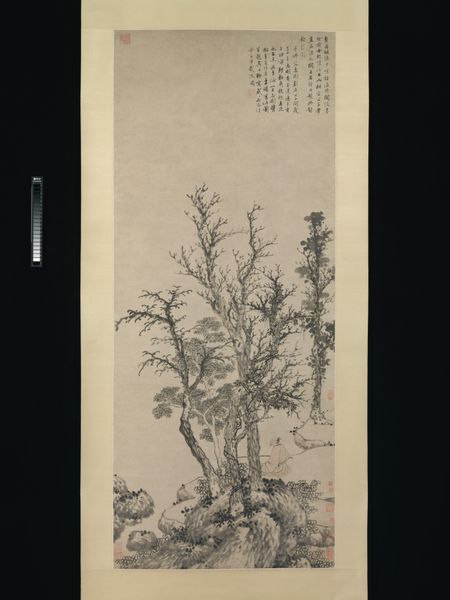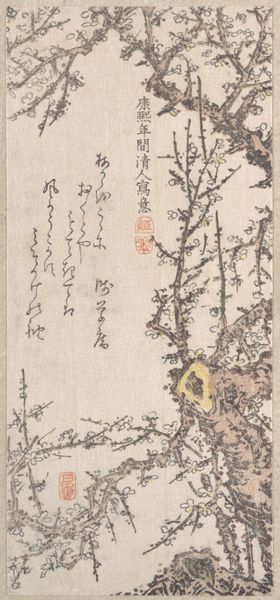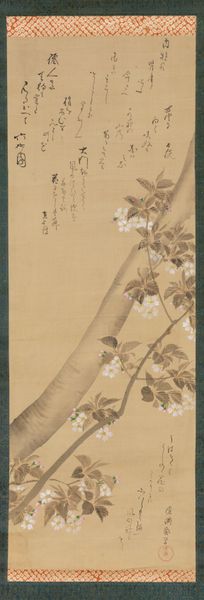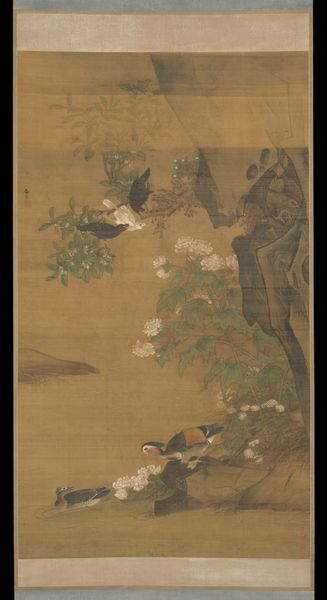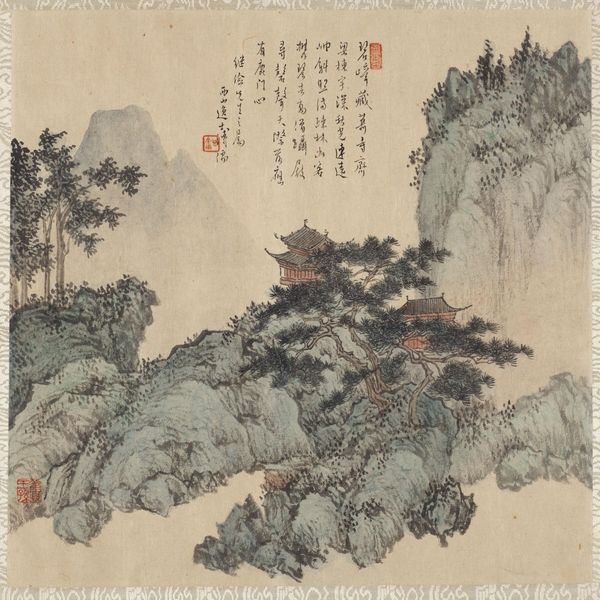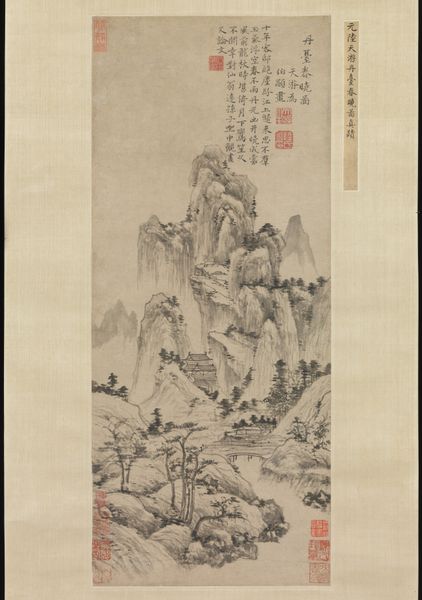
#
tree
#
aged paper
#
toned paper
#
asian-art
#
old engraving style
#
sketch book
#
japan
#
personal sketchbook
#
pen and pencil
#
pen work
#
script guideline
#
watercolor
#
historical font
Dimensions: Image: 42 13/16 × 17 3/8 in. (108.8 × 44.1 cm) Overall with mounting: 71 13/16 × 18 5/16 in. (182.4 × 46.5 cm) Overall with knobs: 71 13/16 × 22 5/8 in. (182.4 × 57.5 cm)
Copyright: Public Domain
Curator: Oh, look at this, would you? "Sampling Tea beneath the Wu Trees," a work from 1840 by Nakabayashi Chikuto, currently residing at the Metropolitan Museum. First impression? It’s almost monochromatic, like a faded memory. Editor: It absolutely breathes with that elegant reserve typical of its time. The palette suggests a world filtered through social strata and the literati. What strikes me first is the deliberate spatial construction, a staged environment that seems both natural and utterly controlled. Curator: You’ve got it. This is literati painting, right? More about expressing the artist’s inner landscape than documenting reality. And the aged paper... it's not just a surface; it adds layers of meaning. It is historical in the purest sense! Editor: Indeed. Consider how the tea gathering itself—ostensibly a leisure activity—becomes a performance of cultural capital, a display of cultivated taste that implicitly excludes other classes and ways of being. The act of sampling tea transforms into a powerful, quiet declaration of privilege. Curator: That reminds me! Do you think the artist was actually fond of tea, or was it simply part of the artistic landscape he moved in? And, by the way, are they really under “Wu” trees, or is it an artistic interpretation? Editor: It's the dance that matters, the minuet of social aesthetics, more than any literal depiction of trees. The historical context demands we read these paintings as cultural artifacts imbued with encoded values and social positions. Even the choice to use muted watercolor reflects deliberate aesthetic and ethical choices. Curator: Right. I see it now! I suppose the real genius of this is making the everyday seem so monumental, while it seems so unassuming on first glance. A microcosm of life expressed in delicate brushstrokes... it’s like a whisper that gains power over time. Editor: Exactly. It forces us to confront not just the aesthetic beauty, but the ideological framework that supports its very existence and, by extension, how such frameworks operate today in defining access, value, and power in contemporary cultural spaces. It lingers. Curator: Precisely. So, beyond just the trees and tea, we’re left contemplating these silent gestures, and perhaps understanding them within the larger scope of history… which makes it an active and potent conversation we’re all participating in. Editor: Leaving us to consider who has historically been included in the sampling of the fruits of culture—and who has been conspicuously left out. The questions it raises echo into our present.
Comments
No comments
Be the first to comment and join the conversation on the ultimate creative platform.
